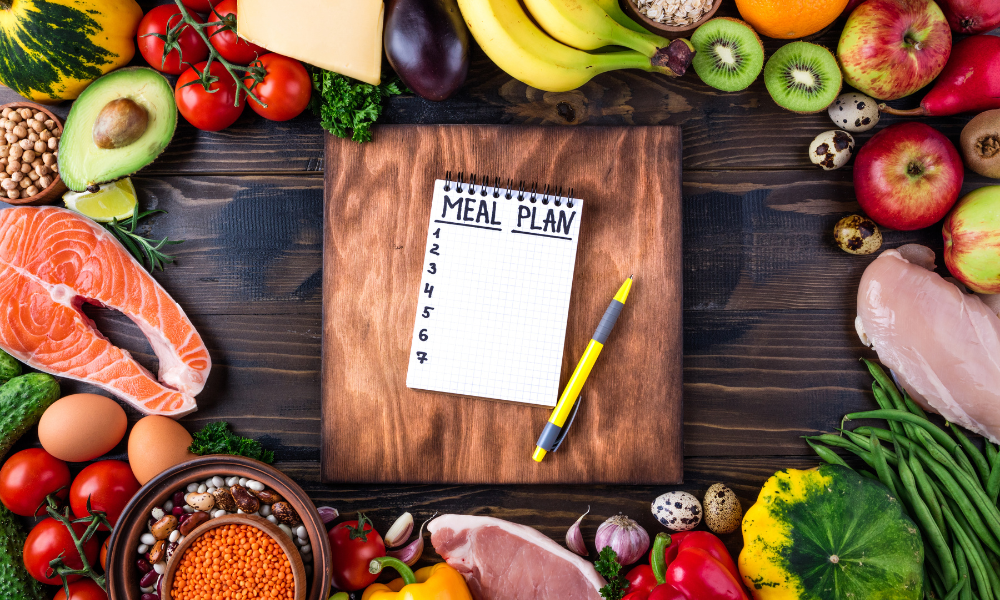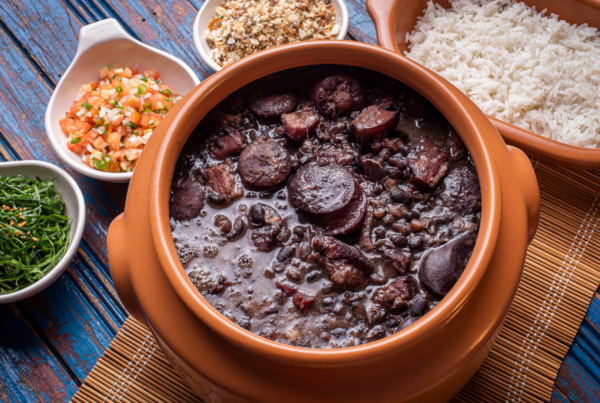We talk about meal planning a lot around here, but we haven’t dove into how to do it…until now. Meal planning is an excellent and useful tool for preparing nutritious, balanced meals while saving time and money. Meal planning can increase the likelihood of achieving health objectives. It can be a game changer in enhancing overall health and wellness.
Meal planning has numerous health benefits, from reducing stress to improving nutrition. It takes the guesswork out of meals, simplifies grocery shopping, and saves time in the kitchen. It can also save money, as you’re buying only what you need and using ingredients to their full potential. Planning your meals can also reduce food waste, as you’ll be less likely to throw away food that’s been planned for and purchased. It also encourages you to look ahead and buy ingredients that you will use for more than one meal.
Isn’t it time that you start meal planning today? Here is meal planning 101. We will give you some simple ways to create healthy weekly menus and implement meal planning into your lifestyle.
Getting Started with Meal Planning
There’s no right or wrong way to create a meal plan, but here are some simple steps to get you started:
- Consider your eating habits. Before you begin, look closely at what you consume. Are you vegan? Do you mostly eat plant-based foods? Do you like simple or complicated recipes? Understanding the answers to these questions can assist you in developing the ideal meal plan for you.
- Establish a routine. Because you are just getting started, start with a weekly meal plan. Look at how you eat during one week. Will you need to plan 3 meals per day? Is your eating schedule different on the weekends? Paying attention to your eating routine (or establishing a new one) will help you plan accordingly.
- Plan it. Get your notebook out and get meal planning! Write each day of the week and leave space under each. Then write the meals you are planning for. If you want to keep it simple at first, just plan for dinners. You can plan breakfast and lunch after you get good at meal planning in general. Under each day, write the meal you want to make, including all ingredients needed for each dish. Once you get three days planned, try to use some of the same ingredients or leftovers for the remaining dinners.
- Shop according to your plan. Create a grocery list before you head to the store. This will help prevent unnecessary purchases and keep you organized and on track. Buy only what’s on your meal plan. If impulse buying is too easy for you, online shopping can be a great tool. By picking up your order rather than going into the grocery store, you can stick to your list better. And it will save you some time too!
- Stay flexible. Remember that things happen, and it’s okay to adjust your meal plan as needed. If you need to skip a meal or two or end up eating out one night unexpectedly, simply save the planned meal for that day and use it on next week’s plan.
Creating Balanced, Healthy Meals
Now that you know how to write a meal plan and shop for it, let’s look at creating balanced, healthy meals. It is critical to prepare nutritious meals that will offer your body with energy it needs. Here are some simple tips to consider when planning out your meals:
- Make veggies the star of your plate. Load up on nutrient-rich vegetables by serving them as a main course. Try making roasted vegetable stir-fries, vegetable salads, or grilled veggie tacos.
- Aim for balance. Look for methods to incorporate a variety of carbs, proteins, healthy fats, vitamins, minerals, and fiber into your diet. This will ensure that you’re getting the most bang for your nutritional buck.
- Vary your protein sources. Include a variety of plant- and animal-based proteins throughout the week. Try to include small amounts of fish, tofu, edamame, beans, lentils, eggs, chicken, and tempeh.
- Incorporate healthy fats. Healthy fats provide satiety and essential fatty acids. Avocado, olive oil, nuts and seeds, and nut butter are all excellent options.
- Consider color. Aim for color and variety at each meal. Include a variety of fruits and vegetables, as well as whole grains and legumes.
- Finish it up with something unique. Get creative with the toppings! Fresh herbs, crunchy nuts and seeds, and lightly dressed raw or cooked vegetables work well.
Meal Planning Tips for Busy People
Meal planning is an awesome tool for everyone, but it can be extremely useful for busy people. If you’re trying to squeeze meal planning into a hectic schedule, here are a few tips to help make it work:
- Make the meal plan a priority. Set aside a few minutes each week to plan your meals. The investment of time will pay off in the long run.
- Don’t reinvent the wheel. Stick to your basic favorite meals and save time by repeating recipes.
- Keep ingredients on hand. Stock your pantry, freezer, and refrigerator with a variety of healthy staples that you can easily combine to create meals.
- Prep what you can. While you’re cooking one meal, take the time to create a few simple components for the following meal.
- Take advantage of leftovers. Take the time to plan recipes that will leave you with tasty leftovers. This can help you save time in the future.
Meal planning is an excellent approach to saving time and money at the supermarket while preparing healthful, balanced meals. It can be intimidating at first, but with a little practice, it can become second nature. Start slowly and build up your meal-planning skills over time – soon, it will become second nature! Before we close, here is an example of a weekly meal plan with dinners only so that you can get an idea of how one can look:
Monday: Grilled chicken with roasted veggies
Ingredients: boneless chicken breasts, bell peppers, zucchini, carrots, olive oil, garlic, salt, black pepper, rosemary
Tuesday: Spaghetti and meatballs and side salad
Ingredients: spaghetti pasta, ground beef or turkey, breadcrumbs, egg, Parmesan cheese, marinara sauce, garlic, salt, black pepper, parsley, lettuce, tomatoes, cucumber, onions, balsamic vinaigrette
Wednesday: Veggie stir-fry with chicken
Ingredients: leftover grilled chicken (from Monday), bell peppers, onions, broccoli, carrots, snap peas, garlic, ginger, soy sauce, sesame oil, cornstarch, red pepper flakes
Thursday: Baked salmon, quinoa, and steamed broccoli
Ingredients: salmon filets, lemon, garlic, dill, olive oil, salt, black pepper, quinoa, water or broth, broccoli florets
Friday: Homemade pizza
Ingredients: pizza dough, tomato sauce, mozzarella cheese, pepperoni, mushrooms, bell peppers, onions, olive oil, garlic, dried oregano, salt, black pepper
Saturday: BBQ ribs and corn on the cob
Ingredients: BBQ sauce, brown sugar, paprika, garlic powder, onion powder, salt, black pepper, fresh corn, butter, salt
Sunday: Creamy mushroom pasta
Ingredients: pasta of choice, mushrooms, butter, garlic, heavy cream, Parmesan cheese, thyme, salt, black pepper. Optional: white wine, chicken broth.
**Take notice that many of the ingredients are the same. Wednesday’s meal (Veggie stir-fry with chicken), for example, uses the leftover grilled chicken from Monday’s dinner. This is one of the ways that meal planning can save you time and money.











